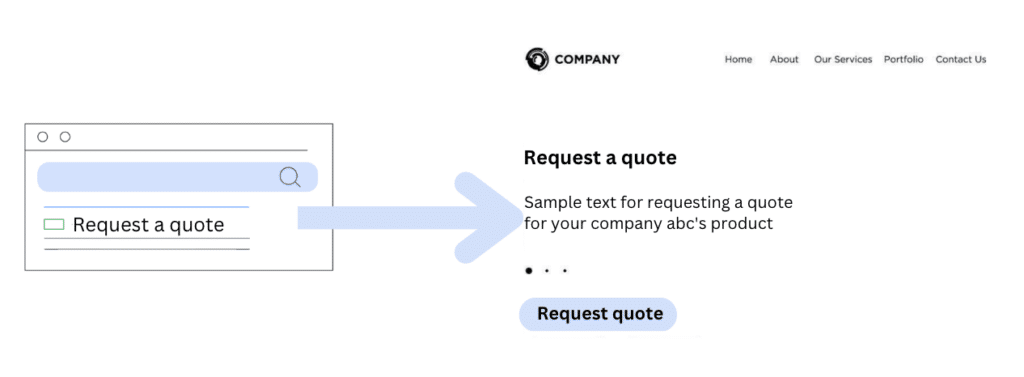5 Ways to Optimize Landing Pages for PPC
A landing page is a crucial component of a successful PPC campaign. A well-optimized page can improve your page engagement and conversion rate, bringing more leads to the website and more sales for your business. Today we’re going to walk through the top 5 ways you can optimize your landing pages for your pay-per-click campaigns.
1. Focus On Topic
Make sure the content on your landing page matches the copy used in your ads. Headlines, content, forms, and call to actions (CTAs) should all align with your ad messaging. This will help improve your ad quality score as well as limit confusion for the user.

2. Create a Strong Call To Action – Above the fold if possible
The goal of your landing page is to have users take some sort of action. You will see fewer conversions if your audience is confused on what action to take.
Most users will scan your landing page instead of reading it, so the bolder you can make your CTA, the better. Use a color that will pop out on your landing page and always try to keep the CTA above the fold – i.e., visible to a user without needing to scroll down.
The goal is to make the requested action as simple for the user as possible, so your CTA needs to be clear about the action you’re requesting. Use language that directs your website visitors to take a specific action that’s relevant to your business objectives. If you aren’t sure about the language, try saying “I would like to…” in your head before reading the CTA. If it makes sense, then you’re on the right track.

3. Keep Your Form Simple
It’s important to collect the appropriate information on your form, but it’s as important to have your form as user-friendly as possible. This means keeping the form short by only asking for relevant information from your user. The length of your form can impact your conversion rate by as much as 20%, so stick to the minimum amount of information you need to complete the request. Always work on optimizing and testing your form if you find users are dropping off during the process.

4. Fast Page Load Speed
It’s critical to the user experience that your landing page meets a few basic SEO requirements: it’s secure, the images are compressed to smaller sizes, it incorporates mobile-friendly elements, and loads quickly. A slow page load speed increases bounce rates causing you to lose conversions. It’s best to keep page load time under 2 seconds if possible.

5. Test & Measure different Elements
Testing different variations of your landing page can help you identify what works best for your audience. Measure the results of your tests and make data-driven decisions to optimize your landing page. Some of the changes you can test on a landing page are:
Headlines
Test different variations of the headline to see which one resonates best with your audience.
Copy
Test the length, tone, and messaging of the copy to determine what drives the most conversions.
Images and Videos
Test the use of different images and videos to see what works best in capturing the attention of your visitors.
Call-to-Action (CTA)
Test the color, size, and placement. Make sure it stands out and encourages visitors to take a specific action.
Forms
Test the number of form fields and the form placement on the page to optimize the form completion rate. Make sure you still include the information you need to make this a valid lead. Implementing autofill is also an easy way to improve your completion rate by helping users fill out a form quickly.
A/B Testing
Perform A/B testing to compare different versions of the landing page to see which one performs best in terms of conversion rates, bounce rates, and other metrics. To conduct a successful A/B test, it’s important to ensure that both versions of the landing page are as similar as possible, except for the specific element or elements that you are testing. This will help you isolate the impact of that element on the performance of the page.
Optimize Landing Pages to Enhance ROI
Optimizing your landing pages for PPC campaigns is a crucial step in maximizing your return on investment. By focusing on key elements such as headlines, copy, CTAs, and mobile optimization, you can create landing pages that convert visitors into customers. Remember to test and measure to ensure that you’re making data-driven decisions when making changes.